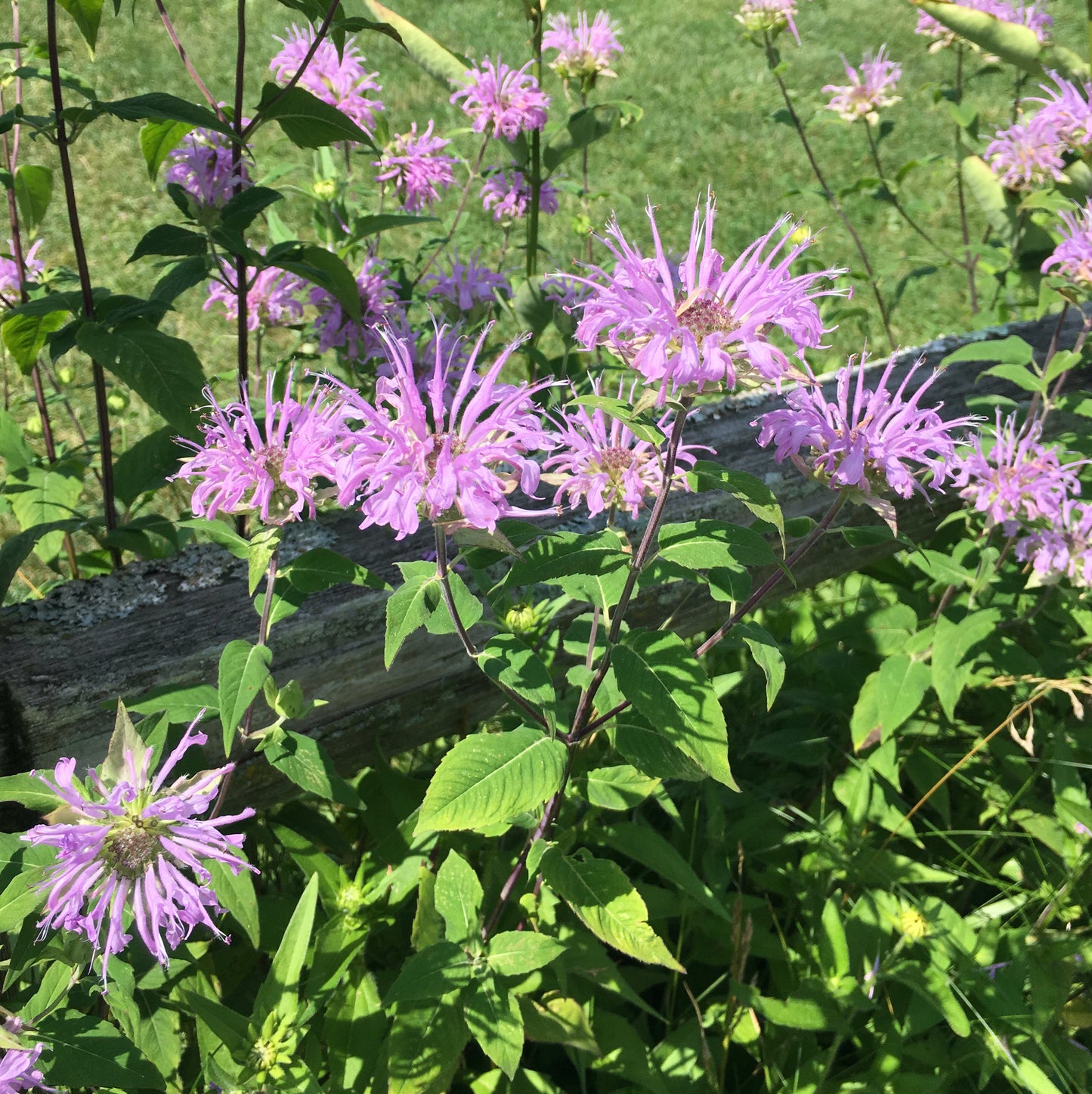Wild bergamot
Monarda fistulosa
Monarda fistulosa
Couldn't load pickup availability
Sun/shade: Full sun to part shade
Soil moisture: Dry to medium
Height: 2-4'
Flowering period: July
Deer resistance: High
With tubular flowers pointing aloft, wild bergamot proclaims a festival of nectar to foraging bumble bees. The elongated shape of the flowers favors long-tongued pollinators, with butterflies and large carpenter bees among the frequent visitors in addition to bumblebees. Hummingbird clearwing moths can also often be seen hovering about the plant’s lavender blooms. The moths bear a striking resemblance to hummingbirds as they dart and bob, wings ablur, in the course of their nectar-seeking.
Within its native NE Ohio range, wild bergamot can be found growing in meadows, along forest edges, and in woodlands possessing an open canopy structure. Wild bergamot grows well under conditions of full sun to partial shade and soil moisture ranging from moderately wet to moderately dry. The plant is medium in height (3-4’), and during its July bloom, its lavender coloration provides a lovely complement to the oft encountered yellow hues of the pollinator garden. Wild bergamot also has good drought tolerance and is highly resistant to deer herbivory, giving the plant staying power when summer is at its peak. Over time, wild bergamot will spread through short rhizomes to form a tight cluster of plants.
After wild bergamot's flowers fade, it will often become subject to powdery mildew and can appear ragged. To conceal the plant's tired late-season foliage, plant a slightly shorter plant in front of it, such as short-toothed mountain mint.
Photos by Julie Slater.





